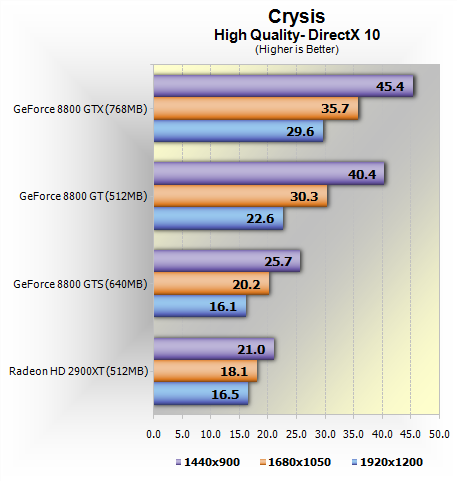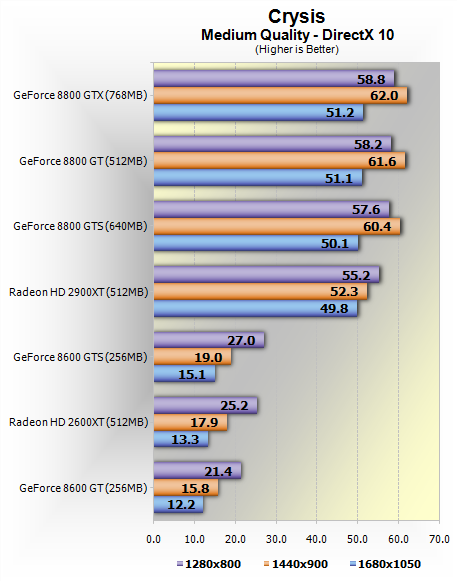DirectX 10 Performance
Test System Specs: Hardware
- Intel Core 2 Duo E6700 (2.66GHz) LGA775
- x2 1024MB Corsair XMS PC3-10600 CAS7 Module(s)
- ASUS P5E3 Deluxe (Intel X38)
- OCZ GameXStream (700 watt)
- Seagate 500GB 7200RPM (Serial ATA II)
- Nvidia GeForce 8800 GTX (768MB)
- Nvidia GeForce 8800 GT (512MB)
- Nvidia GeForce 8800 GTS (640MB)
- ATI Radeon HD 2900XT (512MB)
- ATI Radeon HD 2600XT (512MB)
- Nvidia GeForce 8600 GTS (256MB)
- Nvidia GeForce 8600 GT (256MB)
Software
- Microsoft Windows Vista (64-bit)
- Nvidia Forceware (169.01)
- ATI Catalyst (7.10)
- Intel System Drivers (8.4.0)

Now we are running Crysis in DirectX 10 mode using Windows Vista (64-bit). The GeForce 8800 GTX performance has been just slightly reduced but now the best playable resolution is 1680x1050. The GeForce 8800 GTS and Radeon HD 2900XT were useless in DX10 mode and neither could deliver playable performance at even 1440x900. The Radeon HD 2900XT was particularly bad here and it looks like ATI is having trouble with their DX10 drivers.
Until ATI or Nvidia decide to announce a next generation product, there is a new price-performance king in the house with the GeForce 8800 GT.

The level of detail in Crysis seems to be too high for this generation of graphics hardware. Mid-range DirectX 10 graphics cards really struggle with the medium quality settings. The GeForce 8600 GTS was the fastest graphics card here and at 1280x800 it managed just 27fps on average which is not quite enough for smooth lag-free gameplay.
We are still hopefully Crytek can bring last minute optimizations based on the demo feedback but that remains to be seen.
